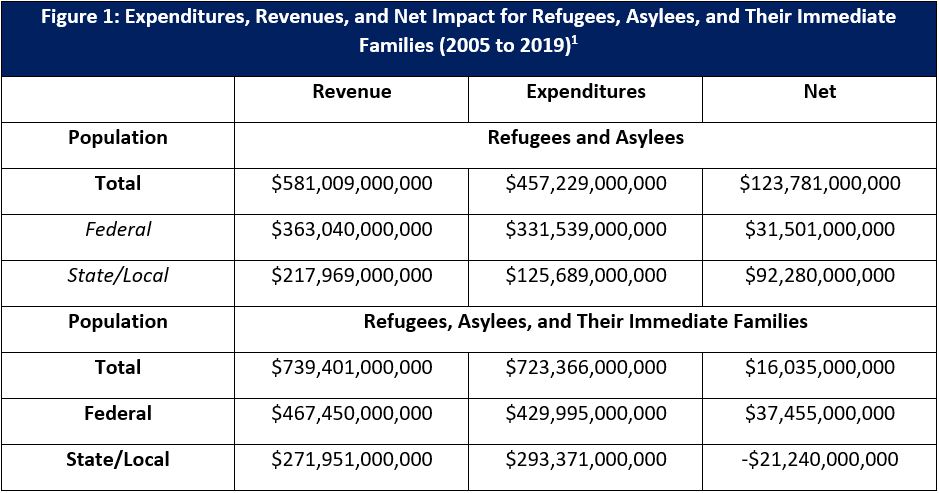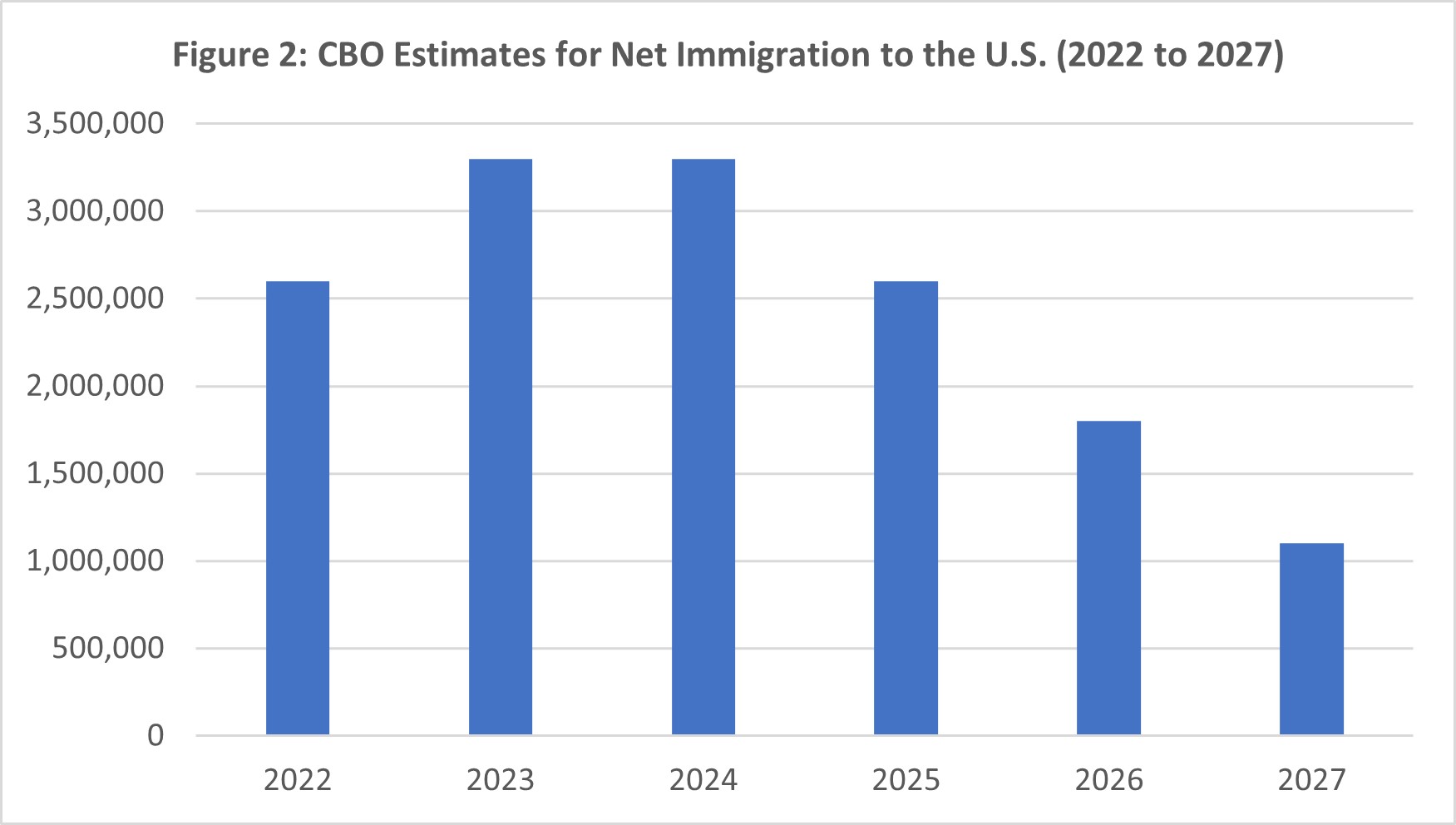Immigration by the Numbers: Recent Reports Show Asylum Seekers and Refugees Strengthen the U.S. Economy
Immigration by the Numbers is a series of timely data-driven analyses of key immigration issues facing the Latino community and U.S. policymakers.
By Cristobal Ramon and Viktor Olah
The Department of Health and Human Services (HHS) and the Congressional Budget Office (CBO) released two reports in February 2024 that showed how immigrants – including recent arrivals – have strengthened the country’s economic performance.
The HHS study, which assessed the fiscal impact of humanitarian migrants between 2005 and 2009, found that they generated $123.8 billion in federal, state, and local revenue. The CBO study, which examined the country’s economic growth through 2034, expects migration will contribute $7 trillion – or .2 percent – to the U.S. Gross Domestic Product (GDP).
These results show that lawmakers should adopt policies that make it easier for migrants to enter and work in the United States, especially when it comes to dealing with the increase of arrivals at the U.S.-Mexico border who are seeking new economic opportunities.
Humanitarian Migrants Have an Overall Positive Impact on Government Revenues
The HHS study sought to assess how refugees and asylum seekers who arrived after 1980 impacted the country’s federal, state, and local tax base between 2005 and 2019. As Figure 1 shows, they contributed $31.5 billion in federal government revenue and billion in state and local revenue. Furthermore, refugees and asylees, on average, made a higher annual per capita contribution to government revenue streams than the rest of the U.S. population, $2,767 compared to $2,258.
While multiple factors explain this trend, these groups used Social Security, Social Security Disability Insurance, and Medicare benefits at lower rates than the rest of the U.S. population because they could not access them due to their age or employment histories. For instance, 9 percent of these groups received Social Security or SSDI benefits, compared to 15 percent of the U.S. population.
 [1]
[1]
These findings changed slightly when the authors included the impact of the group’s family members, including their children. While the groups contributed $37.5 billion to federal coffers during this period, their total contribution was $16 billion at the federal level, state, and local levels since they cost state and local governments $21.4 billion due to the education costs of providing these children with access to public education.
Other studies provide qualifications for this finding. A 2016 National Academies of Sciences study on the fiscal impact of immigrants found that the children of immigrants made higher tax contributions than their parents and native-born Americans due to their earnings and education levels. A 2023 Cato Institute study that updated this analysis noted similar trends, with second and third-generation descendants of migrants making higher contributions compared to native-born Americans between 1994 and 2018.
Immigrants – Including Humanitarian Ones – Contribute to the United States’ Economic Growth
The CBO Economic Outlook: 2024 to 2034, which forecasts the U.S. economy’s performance through the next decade, examined how current and future immigration impacts economic growth. As Figure 2 shows, the report estimates migration, which has increased since 2022 due to increases in border arrivals, individuals entering through parole, and migrants arriving through visa programs, will continue to grow into 2024 when an estimated 3.3 million people will migrate to the country.

These arrivals will make important contributions to the U.S. labor force between 2024 and 2034. The agency estimates that 91 percent of the migrants arriving between 2022 and 2024 will be between 16 and 55 – the prime working age range – compared to 62 percent of the existing U.S. population. These individuals will expand the labor force by 2.7 percent – or 5.2 million people – offsetting a decline in labor force participation by U.S. adults that will continue past 2034 due to slowing demand for workers and the aging U.S. population.[2]
These economic impacts stemming from the influx of these workers will strengthen the U.S. economy’s performance. In addition to bolstering the U.S. economy by $7 trillion, these individuals will boost consumer spending by two percent – or 1.4 percent of GDP – during this time. They will also increase projected residential investment, which measures activity in the residential sector, by 10 percent or .4 percent of GDP during the 2027-33 period.
These Studies Show Why Immigrants – and Good Immigration Policy – is Vital to the U.S.
These studies have major implications for the current debate about the impact of immigrants on the United States. In addition to reinforcing a body of research showing the positive effects of immigration on the country’s economy and federal tax revenues, these reports suggest recent arrivals will benefit the country overall as they integrate into the labor market and become essential to the U.S. workforce, like past migrants in the Latino community.
The studies also show why policymakers must create viable routes to enter and work in the United States. Rather than adopting hardline border policies that reinforce the chaos at the border, lawmakers should embrace legal pathway programs that provide a safer and more controlled alternative to entering the country through the U.S.-Mexico border. They also must reform the country’s legal migration system, which has remained unchanged since 1990, so more individuals can work here.
To be sure, these studies do not negate establishing an orderly and secure border, a goal that Latinos strongly support, or helping cities and states struggling to accommodate significant numbers of migrants arriving in their communities. But, they show that migration to the United States continues to present lawmakers with opportunities to maximize the benefits that new arrivals offer to the country, one that requires a longer-term vision to reach these goals.
[1] Figures calculated in 2019 dollars.
[2] The study does provide qualifiers for these projections. First, it notes that changing conditions in immigrants’ countries of origin can impact the numbers of individuals leaving for the United States. It also notes that the levels of migrants entering the country illegally through the U.S.-Mexico border can fluctuate, meaning the influx of migrants could decrease as well.



